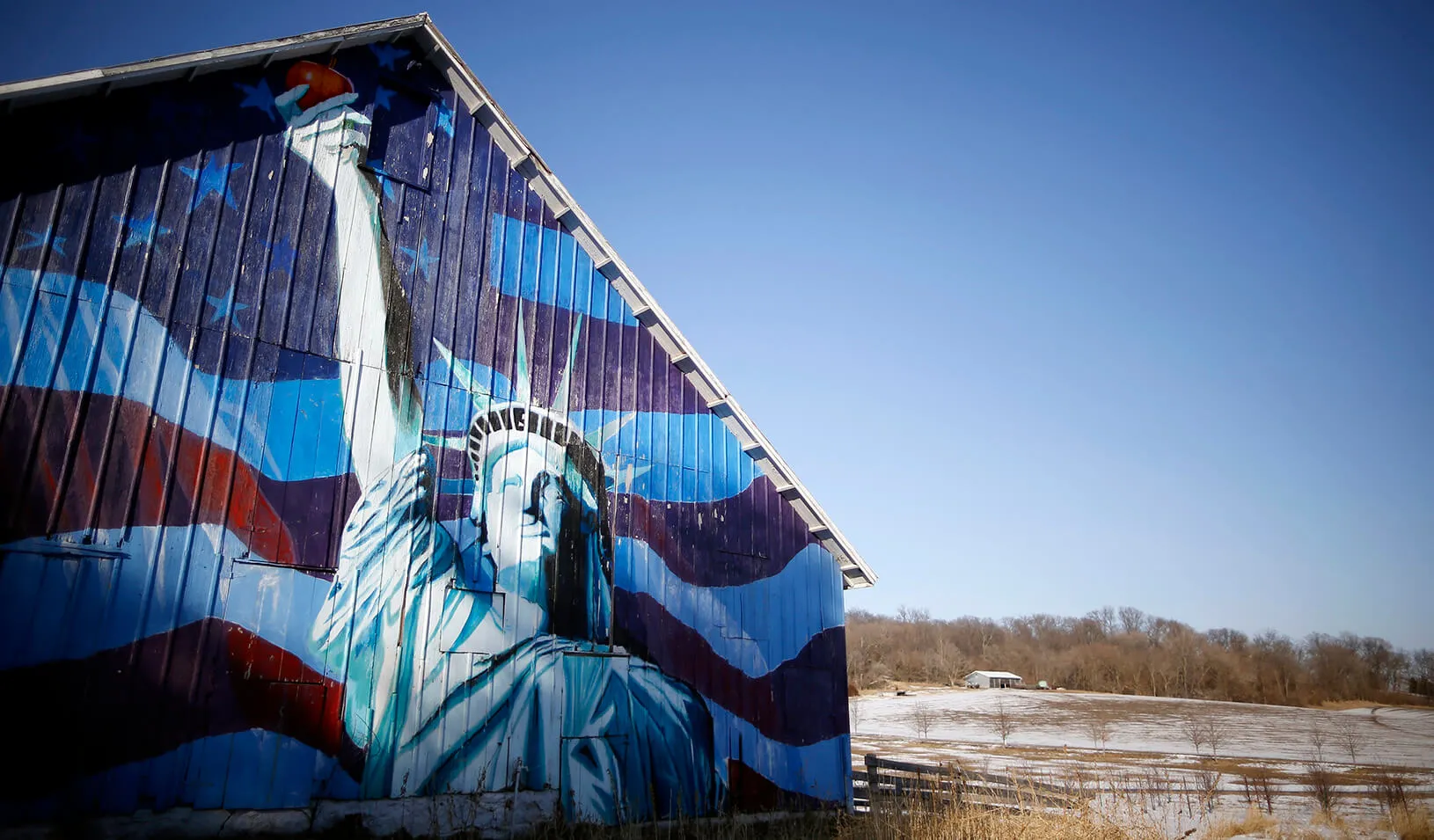Political Polarization’s Geographic Roots Run Deep
The divide between urban and rural voters is growing everywhere: from New York City to farm towns.
May 02, 2017
The political divide between rural and urban voters is wide and getting wider. | Reuters/Jim Young
Red state, blue state. Conservative, progressive. Small government, big government. Among all the familiar fault lines in American politics, says Jonathan Rodden, Stanford professor of political science, the one with the deepest implications is the stark, growing divide between rural and urban voters.
“We’re at a moment of extreme geographic sectionalism,” Rodden told a group of students as part of the Moving Forward After Political Confrontation series at Stanford Graduate School of Business, spearheaded by Saumitra Jha, a professor of political economy. “The question about political polarization in the United States, the question about where we are, what’s happening in the United States after this last election, is all about geography.”
Rodden says his research on geographic polarization shows a striking correlation between population density and voting behavior that grows stronger with each passing election. In short, he says, Democrats are becoming an exclusively urban party.
“Whether it has to do with income, or whether it has to do with race, or whether it has to do with economic decline, it is the case that there is a very pronounced spatial organization of the electorate of the United States,” Rodden says.
“As you go from the center of cities out through the suburbs and into rural areas, you traverse in a linear fashion from Democratic to Republican places.”
He also says that this correlation between population density and Democratic voting persists no matter the size of the municipality. “It’s true of the states, it’s true of the counties, and, most important, it’s true at the level of precincts,” Rodden says.
It’s not just that a densely populated state like New York tends to vote Democratic, or that densely populated counties do. Even small towns are far more Democratic than their surrounding rural areas. And tightly packed suburbs vote more Democratic than suburbs with more widely spaced homes do. And the trend has accelerated across the country in recent years.
Rodden says that this battle pitting a set of urban interests against a set of rural interests didn’t happen overnight and isn’t unique to American politics. However, the severity of the problem is. This, he argues, largely stems from the fact that American politics is dominated by only two parties and features a geographic system of representation. As long as this geographic polarization continues and Democrats remain an urban party, he says, they will continue to be dramatically underrepresented in legislative bodies.
Creatively drawn districts that benefit Republican majorities aren’t the main culprits, Rodden says. Rather, the simple fact that districts are drawn at all disadvantages Democrats.
“When you draw winner-take-all districts, it ends up overrepresenting Republicans,” Rodden says. “This is something that we often blame on gerrymandering, but it’s only strengthened and furthered by gerrymandering. We end up with a lot of bias against Democrats purely because of this spatial arrangement of politics.”
Rodden says the election of Donald Trump as president is just one manifestation of the divide between urban and rural voters. “This is going to be a new fault line in politics in lots of places,’’ he says. “European politics is increasingly going to be a battle between urban, young intellectuals, greens, people who support the European Union — and a rural coalition that wants to pull out of the European Union.” The question becomes what can be done about it?
In the United States, it would be possible to draw more competitive districts. But that would require a redistricting process that prioritized parity, Rodden says. “We certainly don’t have anything like that.”
Beyond that, the polarization of urban and rural interests could be diminished in a system with more parties, or one that doesn’t rely on geographic representation. “Proportional representation can have the impact of reducing this geographic cleavage that emerges so naturally in a place like the United States,” Rodden says.
“There is nothing about population density that automatically generates this kind of cleavage. There are lots of places that have cities and suburbs and rural areas — and suburbanization is not just an American phenomenon,” he says. “But single-member-district, majoritarian systems that produce two parties that hate each other — that’s the worst of all worlds.”
For media inquiries, visit the Newsroom.
Explore More

The Surprising Economic Upside to Money in U.S. Politics

Why the Experts Should Answer to the Amateurs



